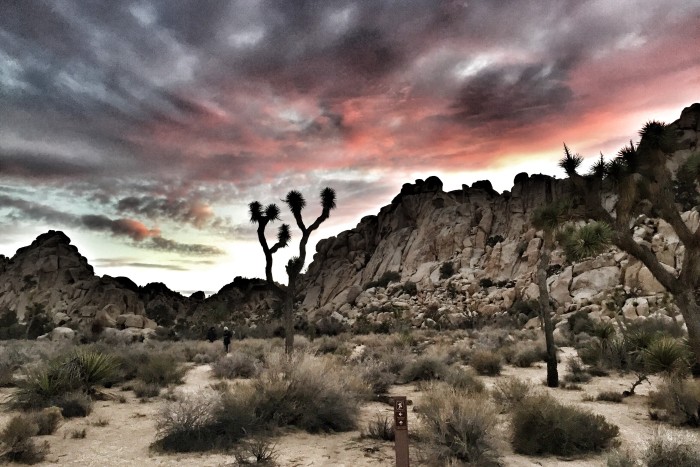Crafted over millions of years by torrential rain, battering wind, and extreme temperatures, Joshua Tree National Park stretches over nearly 800,000 acres of rugged terrain. These landscapes, which can seem deceptively barren, are home to several ecosystems. Despite the harsh conditions, Joshua Tree teems with plant and animal life that has adapted and thrived in the area’s fierce climate.
Joshua Tree National Park is home to large herds of desert bighorn sheep, black tailed jack rabbits, coyotes and kangaroo rats as well as a number of smaller mammals. Since it lies along the Pacific migratory bird flyway, many large groups of migrating birds can be spotted overhead or stopping to rest in the park during the winter months.
The park’s namesake is the Joshua Tree, a member of the agave family with a distinctive appearance. The Joshua Tree was revered by American Indian tribes because its leaves provided durable materials for baskets and footwear, while the buds and seeds made a healthy addition to their food supply.
Joshua Tree National Park is a world class climbing destination. Climbers and bouldering fans come from around the world as it offers the most amazing high desert monzogranite climbing. With over 400 climbing formations and 8,000 climbing routes, it offers great challenge to climbers of all levels.
Make sure you are being good to the park. Learn about the Leave No Trace principles and do your part in the efforts being made to help protect its fragile desert environment and its habitat for plants and animals.

